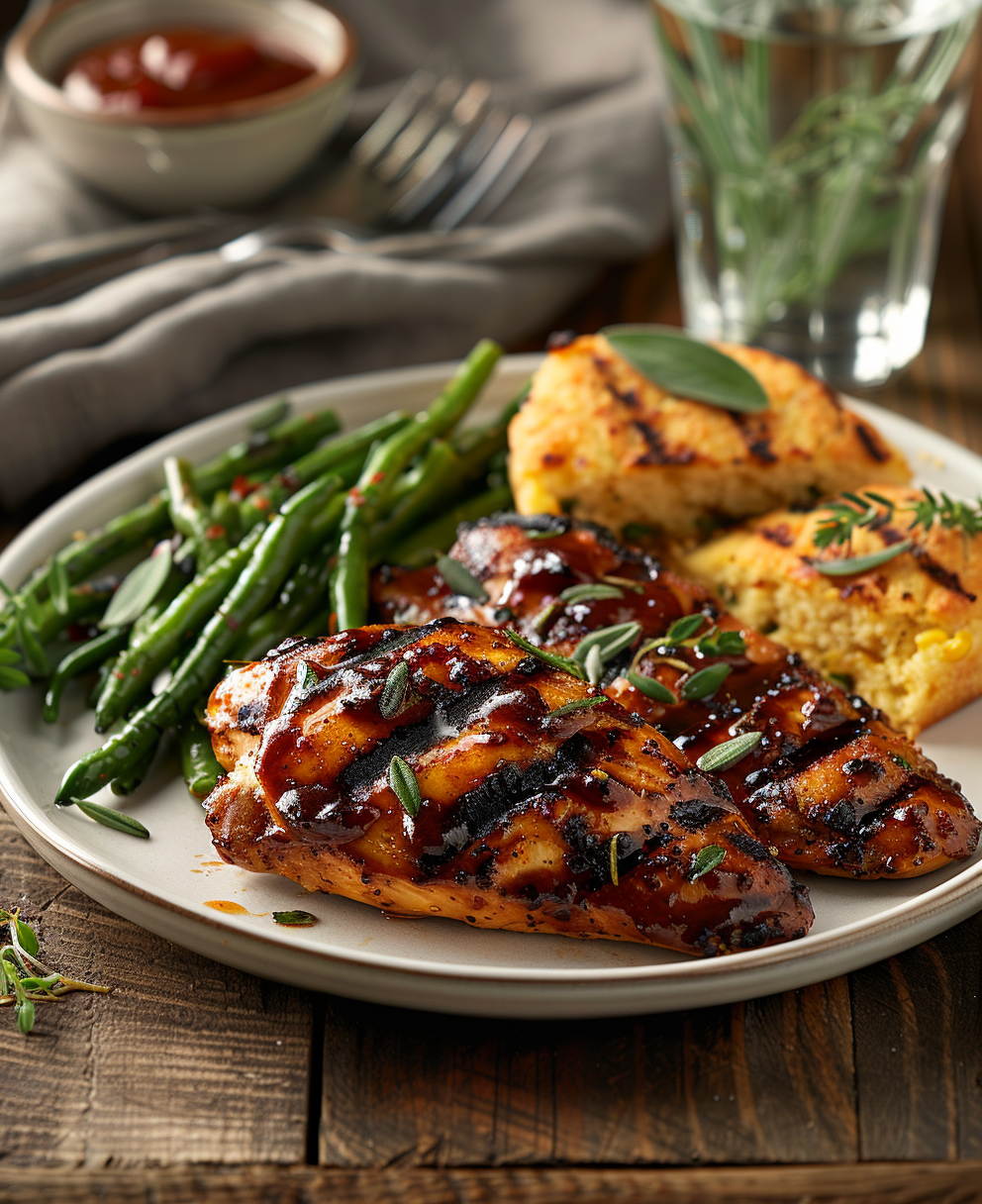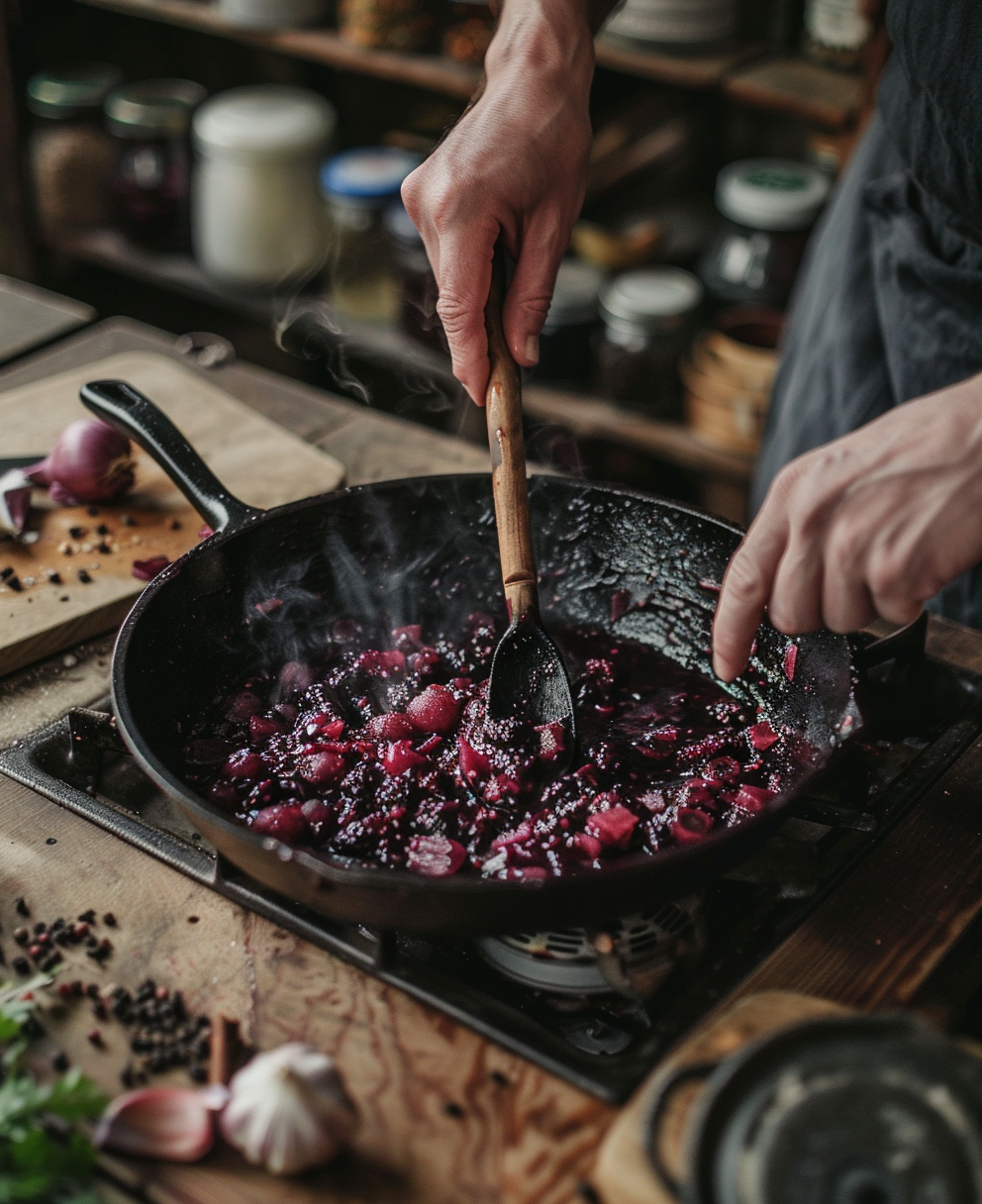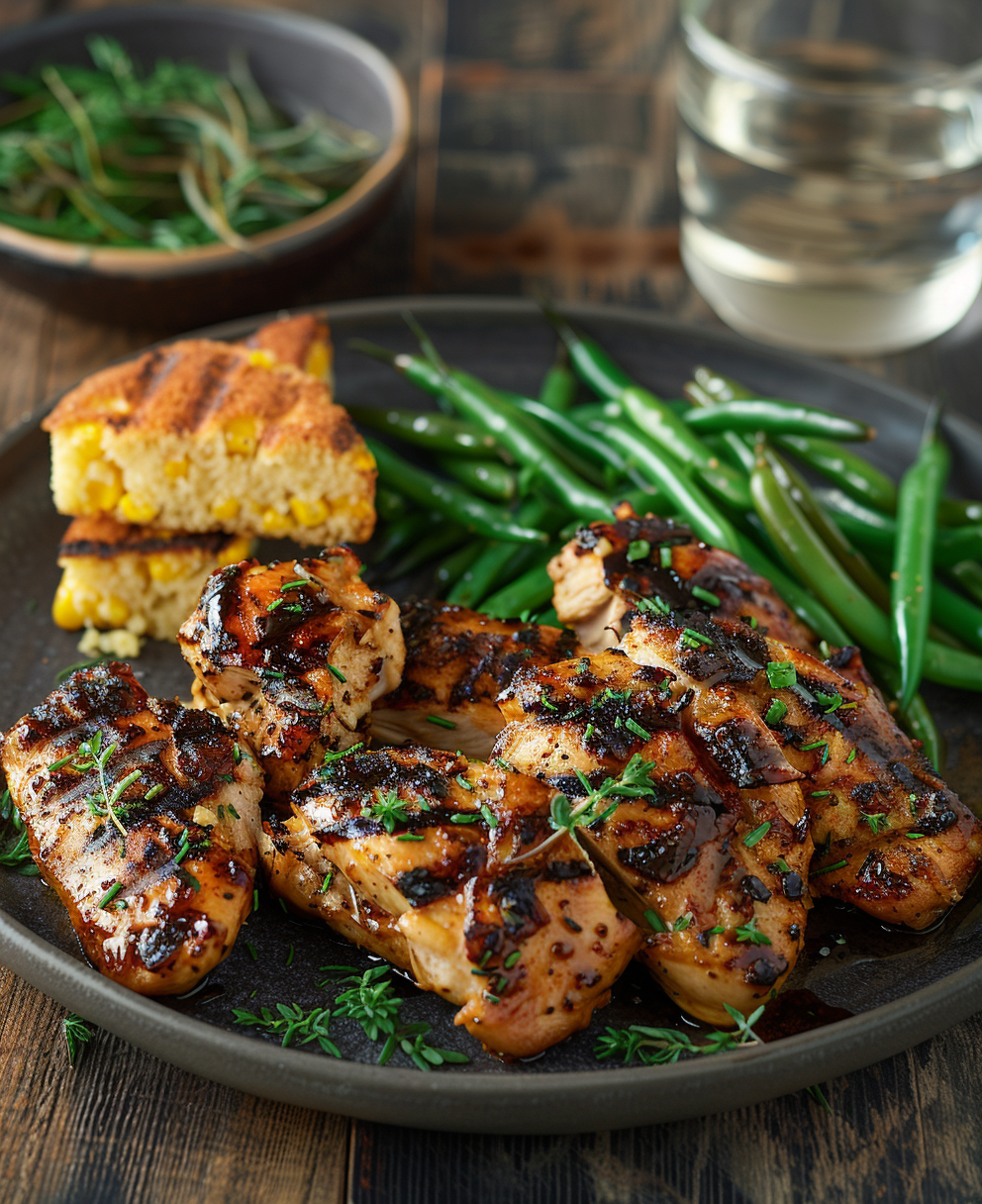
Discovering the Rich Flavors of Wojapi BBQ Sauce
I’ve always had a thing for sauces. Whether it’s a smoky chipotle drizzle or a tangy citrus glaze, I love how they transform a dish. Recently, my search for unique flavors led me to wojapi bbq sauce. This sauce is more than just a condiment—it’s a bridge between Native American tradition and modern grilling culture. Let me tell you, once you try it, there’s no going back.
So, what makes wojapi bbq sauce so special? It’s sweet, tart, and deeply flavorful, with roots that go way back. In this article, we’ll explore its origins, break down its taste profile, and even show you how to make it at home. Plus, I’ll answer some common questions like What does wojapi sauce taste like? and Where does wojapi sauce come from? Ready? Let’s dive in.
What is Wojapi BBQ Sauce?
Wojapi bbq sauce is a modern twist on a traditional Native American berry sauce. Originally made with wild berries, this sauce has evolved into a rich, versatile condiment perfect for grilling, dipping, or glazing. Its growing popularity in the USA isn’t surprising—people love its bold flavor and cultural significance.
At its core, wojapi bbq sauce combines sweet and tangy elements. The key ingredients are usually berries like blueberries, blackberries, or chokecherries, along with honey or maple syrup for sweetness. A splash of vinegar adds acidity, while spices like cinnamon or cloves bring warmth. Together, these ingredients create a sauce that’s both comforting and exciting.
To answer a common question: Where does wojapi sauce come from? It originates from Native American cuisine, where it was traditionally served with game meats or used as a dessert topping. Over time, chefs adapted it into a savory-sweet sauce perfect for barbecue. Today, it’s a favorite among foodies looking to try something new.
Let’s take a closer look at the main ingredients that define this sauce:
- Berries: The foundation of wojapi, providing natural sweetness and tartness.
- Honey or Maple Syrup: Adds depth and balances the tangy notes.
- Vinegar: Cuts through the sweetness for a well-rounded flavor.
- Spices: Warm spices like cinnamon or cloves enhance the berry base.
If you’re wondering What does wojapi sauce taste like?, imagine a mix of sweet jam and tangy barbecue sauce. It’s fruity, slightly spicy, and utterly addictive. Whether you’re brushing it on ribs or using it as a dip for fries, it’s sure to impress.
Next, I’ll share a simple recipe so you can make your own wojapi bbq sauce at home. Trust me, it’s easier than you think!



The Unique Taste of Wojapi BBQ Sauce
Alright, let’s get into the nitty-gritty of what makes wojapi bbq sauce so unforgettable. If you’ve ever wondered What does wojapi sauce taste like?, picture this: it’s like biting into a perfectly ripe berry, but with a tangy twist that keeps your taste buds on their toes. The sweetness hits first, almost like honey drizzled over pancakes, but then—you catch that zing of acidity. It’s not overwhelming, though. Instead, it balances everything out, leaving you craving more.
Here’s the thing about wojapi bbq sauce: its flavor profile is layered and complex. The berries—whether they’re blueberries, blackberries, or chokecherries—bring a deep, jammy richness. Imagine spreading a thick layer of fruit preserves on warm toast, but instead of being cloyingly sweet, there’s a subtle sharpness lurking underneath. That’s where the vinegar comes in, cutting through the sugar like a chef’s secret weapon. And don’t even get me started on the spices. A dash of cinnamon or cloves adds warmth, almost like a cozy blanket for your palate.
Funny enough, I once tried to describe wojapi bbq sauce to a friend who loves smoky barbecue flavors, and he looked at me like I was speaking another language. But when he finally tasted it? Total game-changer. He couldn’t believe how different it felt compared to other sauces. Speaking of which, have you ever wondered What’s the sauce they use at KBBQ? Most Korean BBQ joints rely on a mix of soy-based marinades and spicy gochujang sauces. Those are fantastic, no doubt, but they’re worlds apart from the fruity complexity of wojapi bbq sauce. While gochujang packs heat and umami, wojapi leans into its natural sweetness and tanginess, making it a standout option for anyone looking to switch things up.
By the way, if you’re someone who loves experimenting with rubs and sauces, you might want to check out this killer hogs the bbq rub. It pairs beautifully with wojapi, especially if you’re grilling meats like chicken or pork. Trust me, the combination is pure magic.
How Do You Make Wojapi Sauce?
Now, onto the fun part: making your own wojapi bbq sauce at home. Honestly, it’s easier than you’d think. All you need are a few key ingredients and some patience while everything simmers together. Here’s how I do it:
First, gather your berries. Fresh is great, but frozen works just as well if fresh ones aren’t in season. Blueberries are my go-to because they’re widely available and pack a punch of flavor. Blackberries or raspberries also work wonders if you can find them. Once you’ve got your berries, toss them into a saucepan with a bit of water to prevent sticking. Let them cook down over medium heat until they start breaking apart. This should take about 10 minutes.
Next, add your sweetener. I prefer maple syrup—it gives the sauce an earthy undertone—but honey is equally delicious. Pour in about ¼ cup, give or take, depending on how sweet you want it. Then, splash in some vinegar. Apple cider vinegar is my favorite here; it adds brightness without overpowering the berries. Start with a tablespoon and adjust to taste.
Here’s where the real magic happens: spices. A pinch of ground cinnamon or cloves elevates the whole thing, giving it that signature depth. If you’re feeling adventurous, throw in a tiny bit of smoked paprika for a hint of barbecue flair. Stir everything together, let it simmer for another 5–10 minutes, and voilà—you’ve got homemade wojapi bbq sauce.
Customizing this recipe is half the fun. For instance, if you’re a fan of bold flavors, try adding a teaspoon of chili powder or a squirt of sriracha. Want something closer to traditional barbecue sauces? Check out Blues Hog BBQ Sauce for inspiration—it’s rich and smoky, and you could incorporate some of those elements into your wojapi. Or, if you’re short on time, whip up a quick batch of BBQ chicken in the Instant Pot and slather it with your new creation.
Sourcing ingredients might seem tricky at first, especially if you’re aiming for authenticity. Chokecherries, for example, are a traditional choice but can be hard to find outside certain regions. Don’t stress too much, though. Modern versions of wojapi bbq sauce are all about flexibility. Use what’s accessible to you, and trust that the end result will still be amazing.
One tip I swear by: make a big batch and store it in jars. It keeps in the fridge for up to two weeks, and having a jar handy means you can jazz up meals whenever inspiration strikes. Drizzle it over grilled veggies, brush it onto ribs, or even use it as a dipping sauce for fries. Seriously, the possibilities are endless.
Oh, and here’s a random thought—I recently paired my homemade wojapi bbq sauce with Head Country BBQ Sauce, and wow, the contrast was incredible. The sweetness of wojapi played off the smokiness of Head Country perfectly. If you haven’t tried mixing sauces before, now’s your chance!
In case you’re wondering How do you make wojapi?, the process boils down to three simple steps: cook, season, and enjoy. There’s no right or wrong way to tweak it, either. Some folks like theirs thinner, so they add extra water or juice. Others prefer a thicker consistency, which you can achieve by simmering longer or blending the mixture smooth. Either way, it’s your sauce—make it yours.
To wrap up this section, let me leave you with one last idea. Next time you’re hosting a cookout, set out a bowl of wojapi bbq sauce alongside your usual condiments. Watch as your guests discover its unique charm—and maybe steal the recipe for themselves. After all, isn’t sharing food (and the stories behind it) what makes cooking so rewarding?



Why Wojapi BBQ Sauce Belongs at Your Next Cookout
Let’s be real—cookouts are all about the sauces. Whether you’re slathering ribs with something sticky and sweet or dunking fries into a tangy dip, sauce is what makes the magic happen. And if you haven’t tried wojapi bbq sauce yet, you’re missing out on a serious flavor upgrade. Here’s why this berry-based wonder deserves a prime spot at your next backyard bash.
Wojapi bbq sauce isn’t just for drizzling—it’s insanely versatile. I’ve used it in so many ways that it’s become my secret weapon in the kitchen. For instance, brushing it over grilled chicken thighs? Game-changing. The sweetness caramelizes beautifully while the tang cuts through the richness of the meat. Want to take your burgers to the next level? Slather a spoonful on top of the patty before adding cheese—it melts into a gooey, fruity masterpiece. Oh, and sandwiches? Forget ketchup or mustard. A swipe of wojapi adds a layer of complexity that’ll have everyone asking for your “secret ingredient.”
Funny enough, one of my favorite uses for wojapi bbq sauce is as a dipping sauce. Picture this: crispy sweet potato fries dunked into a bowl of this berry goodness. It’s sweet, tangy, and just a little bit spicy if you tweak the recipe. My friends went nuts for it during our last cookout. Honestly, they couldn’t stop raving about how unique it tasted compared to the usual ranch or aioli options.
Here’s the thing about wojapi bbq sauce: it appeals to adventurous eaters who love trying new things. If you’re someone who gets excited about bold flavors or cultural twists on classic dishes, this sauce is tailor-made for you. Across the USA, food lovers are starting to catch on to its charm. From food trucks in Austin to backyard grills in Portland, people are finding creative ways to incorporate it into their meals. One guy I met even used it as a glaze for roasted carrots. Who would’ve thought? But hey, when something tastes this good, you start experimenting.
By the way, if you’re looking for more inspiration, check out our BBQ and grilling recipes. You’ll find tons of ideas for pairing wojapi bbq sauce with everything from smoked brisket to grilled tofu. Trust me, once you start thinking outside the box, there’s no limit to what you can do with it.
Another reason wojapi bbq sauce stands out is its ability to bring people together. Food has this magical way of sparking conversations, and serving something unexpected like wojapi often leads to fascinating discussions about its origins and flavors. I remember hosting a potluck where I introduced my homemade version. People were curious—not just about how it tasted but also about its Native American roots. Sharing stories like these makes cooking feel less like a chore and more like an adventure.
Customization is another bonus. Not everyone likes their sauces super sweet or overly tangy, and that’s the beauty of making your own wojapi bbq sauce. Adjust the vinegar for acidity, tweak the spices for warmth, or throw in a splash of citrus for brightness. Every batch becomes a reflection of your personal taste. Plus, it’s a great way to impress guests without spending hours in the kitchen.
Oh, and here’s a random tip: don’t sleep on desserts! Yes, you heard me right. While wojapi bbq sauce is amazing with savory dishes, it works wonders in sweet applications too. Try drizzling it over vanilla ice cream or using it as a filling for thumbprint cookies. The combination of fruity sweetness and subtle spice is downright addictive.
FAQ Section
What does wojapi sauce taste like?
Wojapi sauce offers a delightful mix of sweet and tangy flavors. Imagine biting into ripe berries with a hint of honey-like sweetness, followed by a zesty kick from vinegar. Warm spices like cinnamon add depth, creating a balanced profile that’s both comforting and exciting.
Where does wojapi sauce come from?
This sauce traces its roots back to Native American cuisine, where it was traditionally made with wild berries and served alongside game meats or as a dessert topping. Today, it’s evolved into a versatile condiment embraced by modern grill enthusiasts.
How do you make wojapi?
Making wojapi is simple. Cook down berries with water until soft, then stir in a sweetener like maple syrup or honey. Add vinegar for acidity and spices like cinnamon for warmth. Simmer until thickened, and voilà—you’ve got homemade wojapi.
What’s the sauce they use at KBBQ?
Korean BBQ typically relies on soy-based marinades and gochujang, a fermented chili paste known for its heat and umami. Unlike wojapi, which leans sweet and tangy, KBBQ sauces focus on bold, savory notes.
Can wojapi be used as a marinade?
Absolutely! Its balance of sweet and tangy flavors makes it perfect for marinating meats like chicken, pork, or even tofu. Let your protein soak up the sauce for a few hours before grilling for maximum flavor impact.
Is wojapi gluten-free?
Yes, traditional wojapi recipes are naturally gluten-free since they rely on berries, sweeteners, and spices. Just double-check store-bought versions for any added ingredients if you’re avoiding gluten.
What berries work best in wojapi?
Blueberries, blackberries, and chokecherries are popular choices. Each brings its own unique flavor profile, but feel free to experiment with whatever berries are available to you.
How long does homemade wojapi last?
Stored in an airtight container in the fridge, homemade wojapi can last up to two weeks. For longer storage, freeze it in small portions and thaw as needed.
Can I use wojapi on vegetarian dishes?
Definitely! It pairs beautifully with grilled veggies, roasted potatoes, or even as a glaze for plant-based proteins like tempeh or seitan.
What spices complement wojapi sauce?
Warm spices like cinnamon, cloves, and nutmeg enhance the berry base. For a smoky twist, try adding a pinch of smoked paprika or chipotle powder.
Final Thoughts
If you’ve made it this far, you’re clearly intrigued by the idea of wojapi bbq sauce. And honestly, why wouldn’t you be? It’s flavorful, versatile, and packed with history. So go ahead—grab some berries, fire up the stove, and give it a shot. Don’t worry about getting it perfect; half the fun is in the experimentation.
Let me know how your wojapi adventure goes—I’d love to hear about it!

wojapi bbq sauce
Ingredients
Equipment
Method
- Cook the berries in a saucepan over medium heat with a bit of water for about 10 minutes, stirring until they start to break apart.
- Add the maple syrup or honey and stir to combine.
- Pour in the apple cider vinegar and mix well.
- Add the spices (cinnamon or cloves) and any optional spices if desired.
- Let the mixture simmer for another 5–10 minutes until thickened.
- Remove from heat and let it cool before storing in jars.
